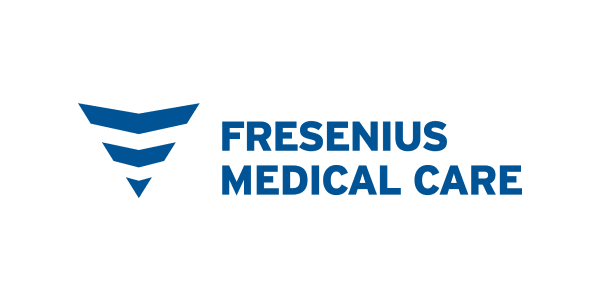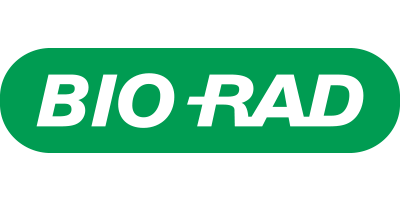
Ensuring Safety and Saving Lives:
A Guide to Software Testing in the Medical Device Industry
A pause in an infusion pump UI. A missed branch in an access-control check. A brittle interface between a home blood-pressure cuff and a hospital EHR. In healthcare software, a “bug” can turn into a safety event. If you build medical devices or SaMD (Software as a Medical Device), you’re balancing three unforgiving demands at once: protect patients, satisfy regulators, and ship at market speed.
This guide is for developers, QA engineers, and quality/regulatory leaders who need a validation strategy that’s defensible, automatable, and ready for continuous change. You’ll see how to align with IEC 62304 and ISO 14971, and how to use GUI automation, code-coverage evidence, and static analysis + architecture verification to make every release auditable.
Unbound Care: The State of Software Testing in Modern Healthcare
Healthcare software has crossed the boundary from clinical systems to everyday life. What once ran inside controlled hospital networks now powers wearables, home diagnostics, and AI-driven decision support, all of which continuously collect, transmit, and interpret sensitive patient data. Gartner calls this shift Unbound Care. It is a model where healthcare is “woven into daily life,” enabled by bio-sensing wearables, virtual care, and real-time data flows across partners.
(Source: Gartner, Unbound Care: Revolutionizing Healthcare and Life Science With Decentralized Products and Services, 24 Feb 2025, ID G00803673.*)
This decentralization means testing can no longer be a final step before release; it must be an ongoing discipline integrated throughout the product lifecycle. Every release, every patch, every integration potentially touches patient data, safety, or regulatory exposure.
The Rising Complexity of Healthcare Software
For software engineering and QA teams, Unbound Care introduces immense opportunity but also profound complexity. Every connection, a wearable device, an AI algorithm, a telehealth API, expands the network of what must be tested, validated, and proven trustworthy.
A single glitch in an infusion pump interface, a lag in a cardiac monitor, or a silent data failure in a diagnostic workstation can translate into a clinical safety risk.
Compounding this, the attack surface has exploded. Gartner notes that following the 2024 Change Healthcare breach, which affected data from 190 million Americans, U.S. payers are rapidly increasing investment in privacy-enhancing technologies (PETs) and cybersecurity AI, with 40% expected to dedicate at least 15% of their IT budgets to PETs by 2026.
(Source: Gartner, Privacy-Enhancing Technologies to Prevent Security Breaches, analysis by Connie Salgy, ID G00824401.*)
These trends redefine what “quality” means, as it is no longer about functional correctness, but safeguarding trust.
A resilient QA strategy in the Medical Device Industry must now address:
Continuous interoperability testing across cloud, device, and on-prem components
Cyber-resilience validation: verifying how your system detects, contains, and recovers from threats
Privacy-by-design: proving consent, access, and data minimization mechanisms behave as intended
Real-time monitoring and traceability, essential for remote patient monitoring and AI-driven diagnostics
From Hospitals to Homes: The Market Forces Reshaping Medical Software Testing
- From compliance to continuous assurance
- Security and privacy now define quality
- Continuous validation for AI-driven systems
For years, software validation in the medical-device industry was a compliance exercise: plan, test, document, and submit. Today, it’s a living system of proof. Standards such as IEC 62304 and ISO 14971 require not only that software be tested, but that the tests demonstrably control clinical risk throughout the lifecycle. The FDA’s General Principles of Software Validation similarly emphasize traceability, reproducibility, and risk-based evidence, not paperwork for its own sake.
Gartner’s Market Guide for Remote Patient Monitoring Solutions highlights that modern care environments depend on real-time data and system interoperability to support patient safety. Each connected sensor, wearable, and interface must be validated for performance, reliability, and data integrity, across networks, devices, and cloud environments. Without automation and measurable coverage, that level of assurance simply isn’t achievable at market speed.
Cyber resilience is no longer separate from quality; it isquality. After multiple healthcare data breaches in 2024, Gartner forecasts that by 2026, 40 % of U.S. payers will allocate at least 15 % of IT spend to privacy-enhancing technologies such as anomaly detection and behavioral analytics.
These are not abstract IT controls. They should be embedded in the product workflows that QA teams must test and validate. Authentication logic, consent capture, audit trails, and encryption paths are now part of the device’s safety case.
As Gartner notes, emerging privacy-enhancing technologies “will require collaboration between engineering, risk, and compliance teams to ensure that cybersecurity and data protection mechanisms are validated as functional product requirements.”³ That collaboration begins in testing.
Artificial intelligence is transforming diagnostics, imaging, and decision support. Gartner’s Innovation Insight: AI-Enabled Medical Image Interpretation observes that healthcare providers are adopting AI to improve diagnostic accuracy and throughput, but warns that “testing and validation must account for accuracy, bias, and workflow integration to maintain clinical trust.”
For medical-device manufacturers, this means software validation extends beyond traditional functionality to include algorithmic behavior under real-world conditions. QA leaders must verify how AI outputs appear in user interfaces, how clinicians interact with them, and how failures are contained. This demands both functional/GUI and architectural testing that can evolve with each new model update.
The growing prevalence of chronic diseases, the incorporation of digital technologies in healthcare, the emphasis on value-based care, and technological advancements collectively drive healthcare providers’ integration of remote patient monitoring (RPM).
Market Guide for Remote Patient Monitoring Solutions, Robert Potts (10 Feb 2025, ID G00818135)
Healthcare providers face significant cyberthreats such as ransomware attacks, with the highest average breach cost across all industries, estimated at $9.77 million.
Innovation Insight: AI-Enabled Medical Image Interpretation, Saru Mehta & Barry Runyon (28 Mar 2025, ID G00824301)
AI in medical imaging is reaching critical mass: healthcare providers are using AI interpretation tools to enhance diagnostic accuracy and reduce clinician workload, but adoption hinges on validation, transparency, and medico-legal trust.
Gartner, Innovation Insight: AI-Enabled Medical Image Interpretation (28 Mar 2025, ID G00824301.)
It is Time to Reconsider Your Approach
- When safety risks start at the User Interface
- When “tested enough” isn’t evidence
- When defects escape architecture

When safety risks start at the User Interface
Most failures in medical software don’t come from obscure code paths, but where people and software meet:- A frozen alarm screen.
- A missing confirmation step.
- A misaligned data field in a connected patient app.
These are not minor usability issues; they’re potential safety events.
As healthcare shifts toward decentralized, data-rich environments, the number of user interfaces multiplies, from clinical consoles to patient-facing apps and home devices. Each one is a possible point of failure.
This is where automated GUI testing becomes essential. As manual validation can’t keep pace with updates, configurations, or regulatory evidence requirements. You need test automation that behaves like a clinician, not a script.

When “tested enough” isn’t evidence
In safety-critical software, “we tested it” isn’t enough. Regulators demand proof that is quantitative, reproducible, and traceable. Yet many teams still operate with blind spots. They run extensive test suites without knowing which parts of the code were actually exercised or whether high-risk logic was ever touched, and that gap can sink an audit.
When a notified body or FDA reviewer asks for proof that each risk control has been verified, screenshots and spreadsheets won’t do. You need metrics that show exactly how much of your code and logic has been tested, which branches were covered, and where residual risk remains.
That’s why coverage measurement is now an integral part of every modern QA lifecycle. It transforms testing from an activity into verifiable evidence.

When defects escape architecture
Even rigorous testing can’t compensate for structural weakness.
Software architecture in medical systems tends to evolve under pressure: new device drivers, cloud connectors, or AI engines layered on top of legacy frameworks. Over time, dependencies sprawl, safety boundaries blur, and the system’s original intent erodes. This “architecture drift” silently increases:
- the chance of failure.
- cybersecurity exposure.
- non-compliance with standards such as IEC 62304 and ISO 14971.
Once those problems appear at runtime, they’re expensive to fix and harder to explain to auditors. What regulators want to see is not just that you tested the product, but that you can demonstrate control of your architecture — that unsafe constructs and unintended coupling are identified and removed before they can compromise safety.
What “Good” Looks Like in a Regulated Medical Software Lifecycle





Validate and Test User Interfaces
Squish platform ensures your GUI behaves safely and consistently where clinicians and patients rely on it most.
-
Remote Patient Monitoring: Automate alert thresholds, offline behavior, and EHR-touchpoint flows across device and network variations.
-
Imaging Software: Validate viewer interactions and safety-critical UI behaviours.

Turn Testing Into Audit-Ready Evidence
Coco Code Coverage tool turns your testing into audit-ready, lifecycle-compliant evidence.
-
Remote Patient Monitoring: Verify alert logic, permissions, and escalation paths.
-
Imaging Software: Prove coverage of error handling, fallback modes, and AI-service failures.

Prevent Architecture Defects
Axivion Suite for Architecture Verification and Static Code Analysis provides clear, explainable reports to support audits and strengthen the long-term integrity of your software.
-
Remote Patient Monitoring: Keep architectures clean as device drivers, gateways, and interoperability layers expand.
-
Imaging Software: Ensure rendering pipelines and AI-integration adapters stay aligned with the intended design as models and vendors evolve.

Prevent GPU Defects
Axivion for CUDA is the only tool that natively enforces NVIDIA’s official CUDA C++ Safety Guidelines while extending MISRA/AUTOSAR rules to GPU code.
-
Remote Patient Monitoring: Keep GPU-based analytics and device-integration layers structurally sound as data volumes and interoperability requirements grow.
- Imaging Software: Ensure rendering pipelines and AI-integration adapters remain safe and predictable as models, vendors, and workflows evolve.
Build a test lifecycle designed to prove safety, security, and reliability at every level
Healthcare software now lives in a world of constant interoperability demands, AI-driven diagnostics, and escalating cybersecurity risks. In this environment, safety and compliance depend on continuous verification and evidence, not periodic testing.
A compliant program must operate as a lifecycle, not a set of disconnected tools. The only reliable approach is a unified, automated toolchain where GUI testing, code coverage, static analysis, and architecture verification work together as one continuous assurance system.
60%
Faster GUI Testing
3×
Faster Test Execution
Discover More on Safe & Compliant Medical Device Software
Ebook: The Recall Prevention Playbook for MedTech Leaders
This is a strategic playbook for MedTech Leaders tired of stagnant processes and ready to achieve regulatory enablement to ship faster.
Webinar: Enhancing Medical Device Software Quality - Part 1
Learn how modern MedTech teams strengthen quality, reduce validation gaps, and ensure audit-ready software with improved assurance workflows.
Webinar: Enhancing Medical Device Software Quality - Part 2
Learn how automated UI/UX testing, unit testing, and code coverage help MedTech teams catch defects earlier, strengthen usability, and reduce costly post-release issues.



